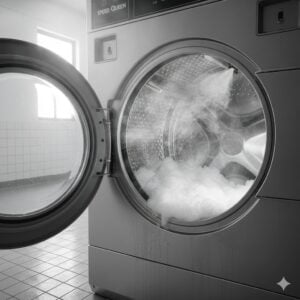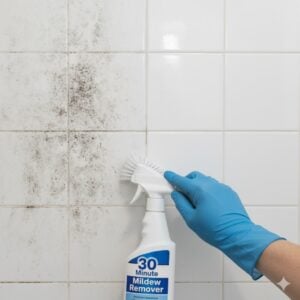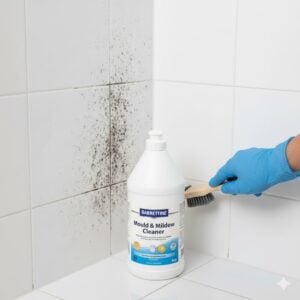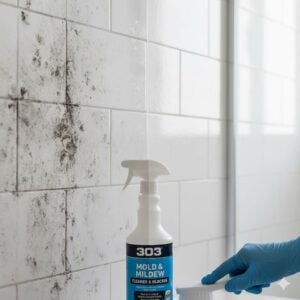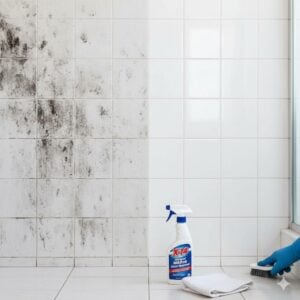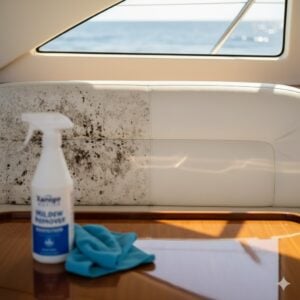Noticed black spots creeping up your bathroom wall or under your kitchen sink? Before you panic or rush to buy heavy-duty chemicals, know this: a good mold removal spray—even one you make yourself—can work wonders when used correctly.
In homes across the UAE, especially in humid spots like Dubai or Sharjah, mold tends to grow fast in bathrooms, kitchens, and around windows. The good news? You don’t always need to call in the pros for minor mold issues. With a few safe ingredients and the right know-how, you can treat small mold patches quickly and affordably using a DIY mold spray.
In this article, we’ll show you how mold sprays work, the best recipes to try at home, where they’re most effective, and how to prevent mold from coming back. If the problem seems bigger than a spray can handle, just click the contact button on the right-middle of this post—we’re here to help.
Table of Contents
Toggle1. What Is Mold Removal Spray and How It Works
A mold removal spray is a liquid solution made to break down and kill mold spores on surfaces like tile, glass, plastic, and even some treated wood. These sprays can either be store-bought or homemade. Most rely on acidic or oxygen-based ingredients to stop mold in its tracks and prevent it from spreading.
How does it work? Mold removal sprays usually:
- Kill live mold spores using antifungal or acidic agents
- Break down surface stains caused by mold and mildew
- Dry out damp areas to prevent future growth
But here’s what they don’t do: reach mold that’s growing deep inside your walls or hidden behind tiles. Spray solutions are meant for surface-level cleaning—not structural remediation. That’s why using them early, at the first sign of mold, makes all the difference.
2. Easy DIY Mold Removal Sprays You Can Make
You don’t need fancy chemicals to fight mold. In fact, some of the best ingredients are probably already in your kitchen. Below are a few tried-and-tested DIY spray recipes that UAE homeowners can safely use.
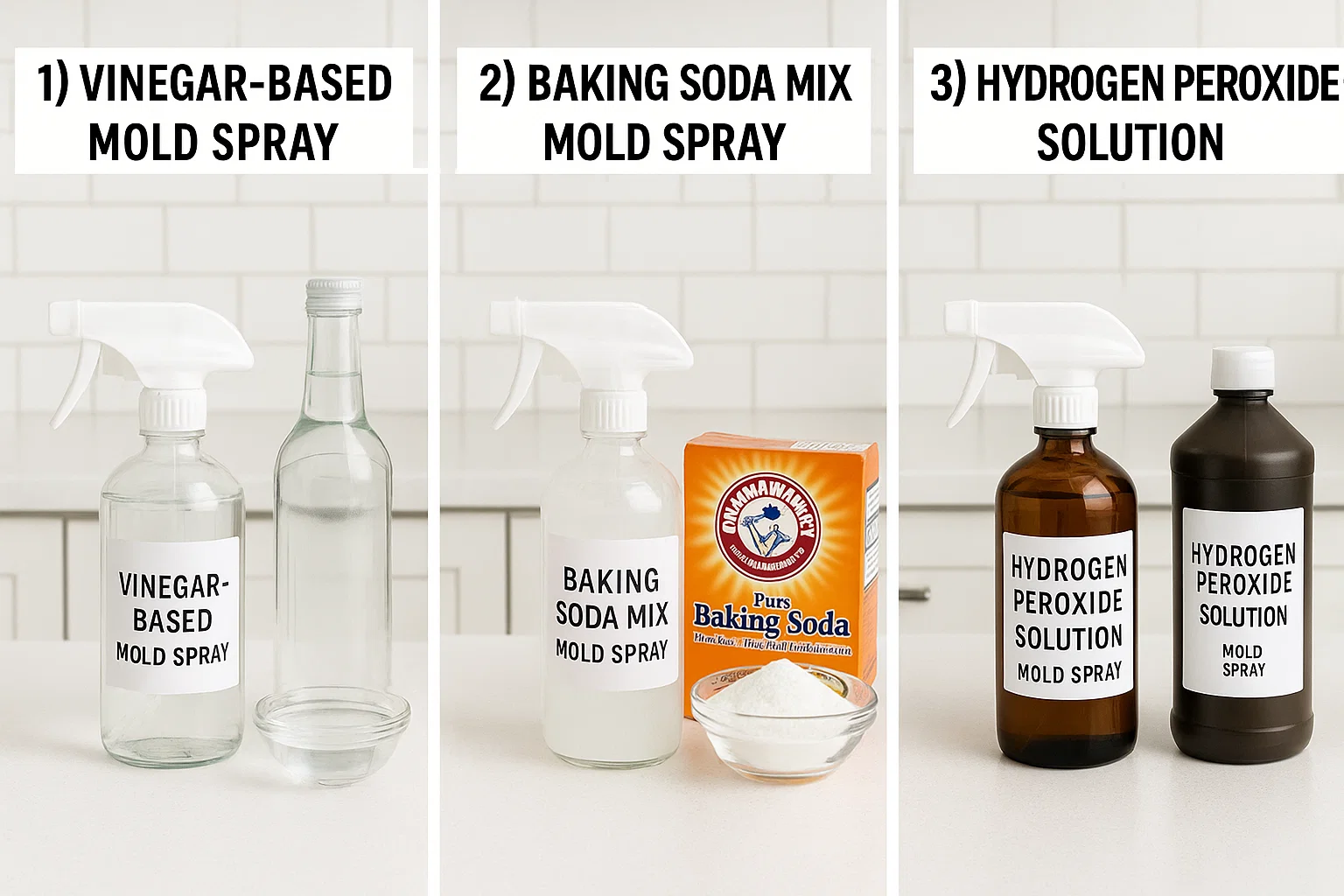
🍋 Option 1: White Vinegar Spray (for everyday cleaning)
- Ingredients: 100% white vinegar in a spray bottle
- How to use: Spray directly on moldy area, let sit for 1 hour, then wipe with a damp cloth
- Best for: Bathroom tiles, shower corners, kitchen backsplash
🧂 Option 2: Baking Soda + Water Spray (gentle and non-toxic)
- Ingredients: 1 tablespoon baking soda + 2 cups water
- How to use: Shake well, spray, scrub lightly, and wipe clean
- Best for: Baby rooms, bedrooms, or places where you want low odor
💨 Option 3: Hydrogen Peroxide (for tougher mold)
- Ingredients: 3% hydrogen peroxide in a dark spray bottle
- How to use: Spray generously, let sit 10–15 minutes, scrub and rinse
- Best for: Strong black mold patches on tiles or silicone caulking
Important Tips:
- Always test sprays on a small hidden area first to check for staining
- Never mix vinegar and peroxide—it can create harmful fumes
- Use gloves and keep the room ventilated during and after spraying
With these DIY sprays, you can safely handle light to moderate mold in your home. Just remember: if it keeps coming back, there may be a bigger issue hiding behind the surface.
3. Best Places to Use Mold Spray
Mold removal sprays work best on non-porous surfaces—that means areas where moisture and mold sit on top rather than soak deep inside. In many UAE homes, these trouble spots are easy to recognize, especially in rooms with high humidity or poor airflow.
Here are the most effective areas to apply mold spray:
- Bathroom tiles and grout: Mold loves the warm, damp environment of your shower. Spray along grout lines, corners, and ceiling edges where condensation collects.
- Kitchen backsplash and sink area: Steam and splashes from cooking or washing create a perfect space for mold to grow behind or under cabinets.
- Window sills and corners: If you see condensation buildup, especially in cooler months or after AC use, mold might form along the sill or frame.
- Inside wardrobes or shoe racks: Enclosed spaces with poor airflow and occasional damp shoes or clothing can easily harbor mold.
Important note: Don’t use mold spray on porous materials like fabric, drywall, mattresses, or natural wood unless specifically labeled safe. On these surfaces, mold may sink deep inside—so spraying alone won’t help.
Always spray, let the solution sit, then wipe clean. For added prevention, reapply a light spray every few weeks, especially during humid seasons in the UAE.
4. Limitations of Mold Sprays: When It’s Not Enough
As helpful as DIY mold sprays can be, they’re not a miracle fix. If you notice the mold keeps returning no matter how often you clean, the problem might be deeper than what a spray can reach.
Warning signs mold spray won’t be enough:
- The mold patch returns in the same spot within days or weeks
- The affected area smells musty even after cleaning
- You see mold on ceilings, AC vents, or behind furniture
- Walls feel soft, discolored, or appear warped
In such cases, there’s often a hidden moisture source—like a leaking pipe, trapped humidity in the walls, or even mold inside the air conditioning system. These situations require more than surface treatment.
We recommend calling professional mold specialists like Bio-On UAE. We use safe, eco-friendly solutions approved by local municipalities and can assess where the real mold problem is coming from. Just click the contact button on the right-middle of this post and let us handle it from there.
5. Final Tips: How to Keep Mold Away for Good
Even the best mold removal spray won’t do much if mold keeps finding the same cozy conditions to grow in. Prevention is the real long-term fix. The good news? A few small changes at home can make a huge difference—especially in the UAE where humidity is a year-round challenge.
Simple habits to prevent mold buildup:
- Ventilate your space: Open windows daily, especially after showers or cooking. If windows aren’t an option, use exhaust fans.
- Use dehumidifiers or AC dry mode: These help keep indoor humidity below 60%, which is key for mold prevention.
- Clean damp areas weekly: Spray vinegar or baking soda solution in areas that tend to stay damp, like the bottom of shower curtains or behind sinks.
- Don’t leave wet towels or clothes indoors: Hang them outside or use a dryer. Trapped moisture can invite mold in hours.
- Fix small leaks quickly: Even slow drips under a sink or behind a toilet can lead to serious mold growth over time.
Remember, mold doesn’t just appear overnight—it thrives where it’s given the right environment. With routine care and the occasional DIY spray, you can keep your home fresh, clean, and mold-free.
Conclusion
Mold removal sprays are a great first step when you spot minor mold in your bathroom, kitchen, or window corners. With just vinegar, baking soda, or hydrogen peroxide, you can fight surface mold safely and effectively—all without harsh chemicals.
But if the mold keeps returning, spreads deeper, or causes health issues—it’s time to bring in the experts. At Bio-On UAE, we specialize in finding the source and solving the problem completely. Click the contact button on the right-middle of this post and let our team take care of it—so you can enjoy a truly mold-free home.








